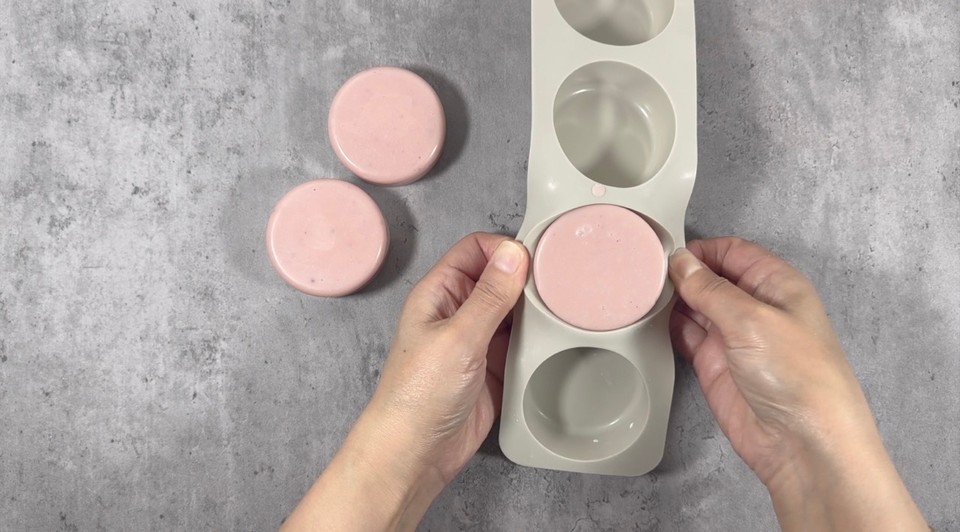Solid Silky Conditioner Bar
| Phase | Ingredient | Percent (%) | Weight (g) |
|---|---|---|---|
| Phase A | Olivem1000 (INCI - etearyl Olivate (and) Sorbitan Olivate) or Polawax NF (INCI - Cetearyl Alcohol and Polysorbate-60) | 9 | 18 |
| BTMS50 (INCI - Behentrimonium Methosulfate (and) Cetyl Alcohol) | 33 | 66 | |
| Myrica fruit wax | 5 | 10 | |
| Stearic acid | 1.5 | 3 | |
| Jojoba wax | 4 | 8 | |
| Cornstarch | 10 | 20 | |
| Coconut oil | 6 | 12 | |
| Broccoli seed oil | 6 | 12 | |
| Coco caprylate | 5 | 10 | |
| Lecithin | 3.5 | 7 | |
| Phase B | Propanediol | 6.1 | 12.2 |
| Citric acid | 1 | 2 | |
| Potassium sorbate | 1 | 2 | |
| Willow Bark extract | 3.2 | 6.4 | |
| Amaranthus Caudatus Seed Extract | 4 | 8 | |
| Fragrance oil | 1.3 | 2.6 | |
| Vitamin E | 0.4 | 0.8 |
*** Optional: a pinch of Mica for color
If you made solid hair conditioners before, you know that these types of conditioners are very potent.
The cationic agent is one of the main ingredients, and the water-based ingredients are at minimal percentages.
I shared many hair solid conditioners, such as Solid Conditioner Bar For Damaged Hair, the Solid Conditioner Bar Naturally Colored, the Cocoa Butter Solid Conditioner Bar and the Mango Butter Solid Conditioner Bar. All of the previous recipes have fewer ingredients than this one. If you want an easier recipe with fewer ingredients, try one of the above.
This recipe was inspired by a commercial solid conditioner bar I got from a friend who wanted me to formulate something similar that contains cornstarch.
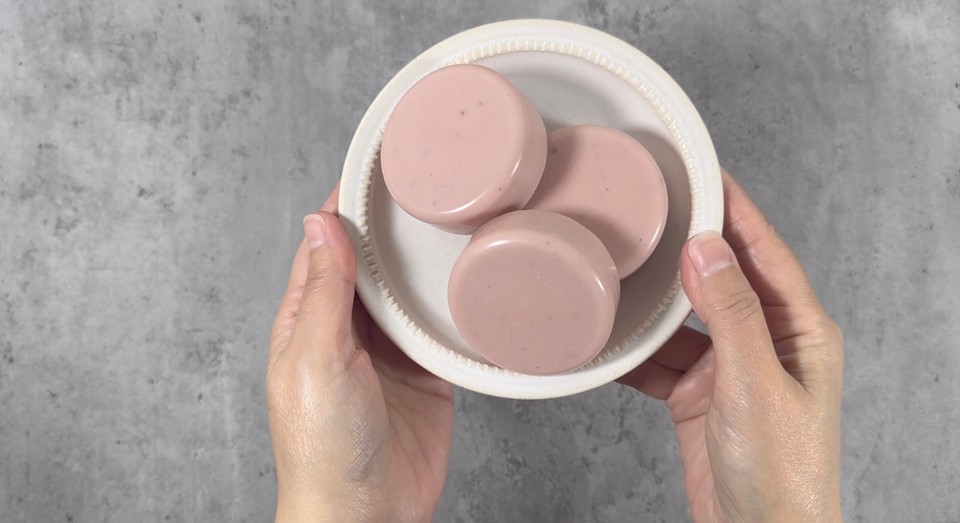
Cornstarch has soothing properties that help calm and alleviate scalp irritation or itchiness.
Cornstarch is packed with fiber, minerals, and antioxidants, making it great for the hair. It helps detangle, hydrate, and add shine, strength, and volume to the hair. It also controls frizz and regulates scalp oiliness.
If you have made a conditioner bar before, you are familiar with the cationic agent BTMS50 or BTMS25. Usually, you will find one of these in the ingredients list as the conditioning agent and an emulsifier.
BTMS is a great conditioning agent that leaves a silky smooth feel in the final product. I also use BTMS as an emulsifier in skin care products such as this Silky Smooth Emulsified Body Butter.
I combined other emulsifiers with conditioning properties in this recipe to add extra hydration and creaminess to the conditioner bar.
I used Olivem1000 and Lecithin as co-emulsifiers and emollients.
Olivem1000 ads a silky and smooth texture, while Lecithin's lubricating properties increase the hair's slip, making it easier to detangle and comb through.
Remember to always do a patch test on new products. In this recipe, I use Lecithin, which is derived from soy. If you have soy allergies, you should patch-test the product before using it.
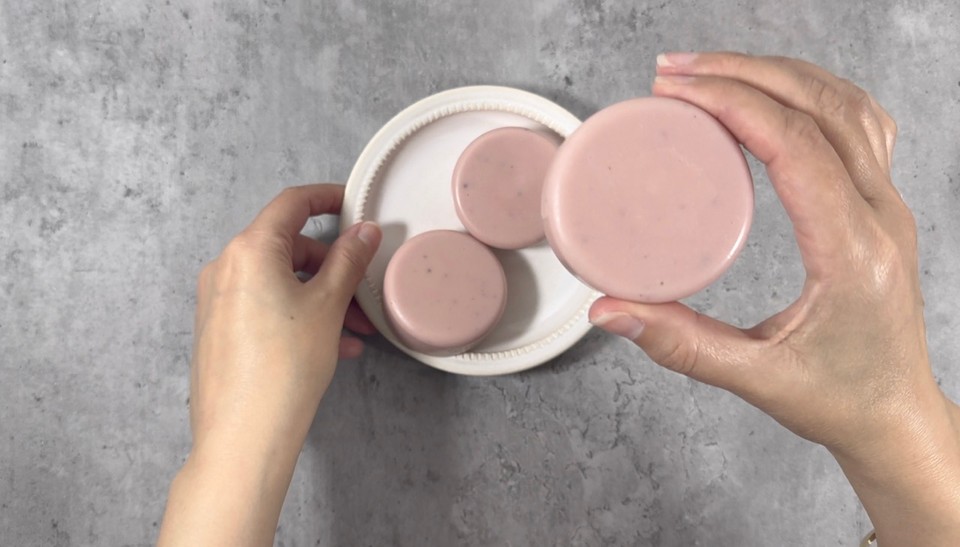
If you want to skip the lecithin, add the amount to the coco caprylate and don't use any lecithin.
Myrica wax adds emollient properties and a thickening effect to the conditioner, helping to improve the texture and viscosity of the final product.
Myrica fruit wax can enhance the shine and luster of the hair, giving it a healthier and more radiant appearance.
You can replace Myrica fruit wax with Rice bran wax. Rice bran wax is a natural plant-based wax derived from the outer layer of rice bran. It can provide similar benefits as Myrica fruit wax.
I also included Stearic acid for its thickening properties and ability to improve the detangling process by reducing friction between hair strands.
You can replace it with cetyl alcohol or cetearyl alcohol.
Jojoba wax, also known as jojoba esters or hydrogenated jojoba oil, is rich in fatty acids and provides excellent conditioning and moisturizing benefits to the hair.
Jojoba wax acts as a protective shield on the hair, locking in moisture and preventing dryness. Preserving the hair's natural moisture promotes softer strands and minimizes frizz for a smoother appearance.
You can replace the jojoba wax with cocoa butter or kokum butter.
For my liquid emollients, I used broccoli seed oil and coco caprylate.
Broccoli seed oil is rich in fatty acids, vitamins, and antioxidants that nourish and condition the hair. It helps to moisturize and soften the hair strands.
Broccoli seed oil naturally enhances shine, giving the hair a radiant and glossy appearance. Broccoli seed oil has a lightweight texture that effortlessly absorbs into the hair, leaving no greasy residue behind.
You can replace the broccoli seed oil with argan, avocado, or grapeseed oil.
Coco caprylate, an ester of plant origin derived from coconut oil, is a light, non-greasy emollient that moisturizes the hair without weighing it down.
Coco caprylate ads shine and help to reduce frizz and provide a thin protective layer on the hair strands.
You can swap the coco caprylate with fractionated coconut or rice bran oil. They are alternatives with similar properties but are a bit more oily than coco caprylate, which has a similar consistency as silicone.
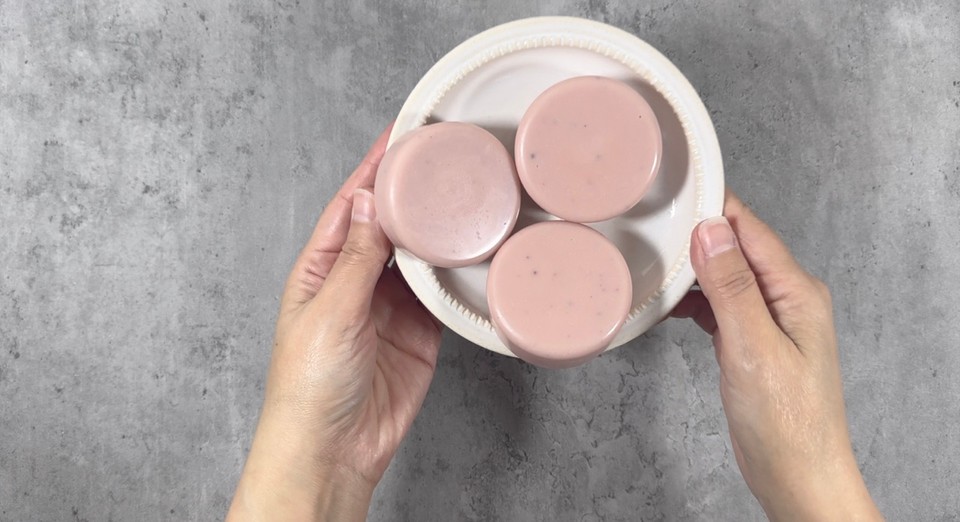
In phase B I started with propanediol, a glycol known for its ability to boost ingredient absorption, maximizing their efficacy in hair care formulations. Its moisturizing properties contribute to a smooth and dewy finish as the formula sets, enhancing overall hair condition and appearance.
You can use a combination of 50% glycerin and 50% aloe vera liquid to replace the Propanediol.
I added citric acid to ensure the final PH of the product would be less than 6. It is easier to add citric acid to the water-based ingredients and dissolve them before combining the phases.
Please consider that the product's PH depends on the overall PH of your ingredients. Change the amount of citric acid in the recipe if you change some ingredients.
You can start using 1g of citric acid and add the other 1g to the coco caprylate or broccoli seed oil.
Potassium sorbate and the Willow Bark extract together are my preservation system.
Willow Bark extract, rich in natural salicylates, promotes scalp health through soothing properties. Willow Bark extract also has anti-inflammatory properties that can help reduce scalp inflammation and can contribute to enhanced shine.
You can use your preferred preservative and adjust the recipe accordingly. If you need less percentage for your chosen preservative, add the rest to the Amaranthus Caudatus Seed Extract.
Potassium sorbate and the Willow Bark extract total (in 200g product) is 8.4g. For example: if you only used 4g preservative, add the other 4.4g to the Amaranthus Caudatus Seed Extract.
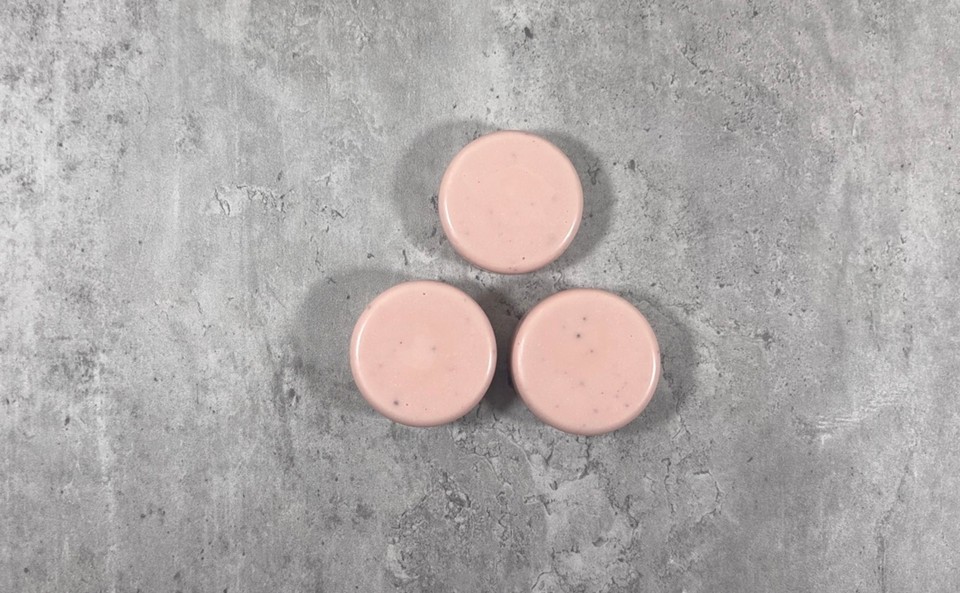
I love to incorporate Amaranthus Caudatus Seed Extract in hair products. I also used this extract in the Eyelashes And Eyebrows Serum for its protein content that can fortify the hair shaft, enhancing its strength and resilience.
You can replace the Amaranthus Caudatus Seed Extract with Hydrolyzed Wheat Protein, Porphyra Umbilicalis Extract, or liquid panthenol 75% (NCI: Panthenol / Aqua/ Citric acid). If you don't want to use extracts, skip this ingredient and use aloe vera liquid instead.
Vitamin E is an antioxidant that helps to delay rancidity. If you don't have vitamin E, you can use sunflower, avocado or argan oil instead.
Lastly, I added fragrance oil. You can use any fragrance oil you like. Ensure it is skin safe and does not exceed the maximum usage rate (the ingredient supplier gives this information).
If you compare this recipe to the other recipes I have shared for solid hair conditioners, you know this one contains way more ingredients than the others.
Combining different ingredients gives a very creamy and smooth product that is easily applied to the hair.
If you are a fan of solid hair products, give this recipe a try.
Method:
- In a heat resistance beaker, add all phase A ingredients.
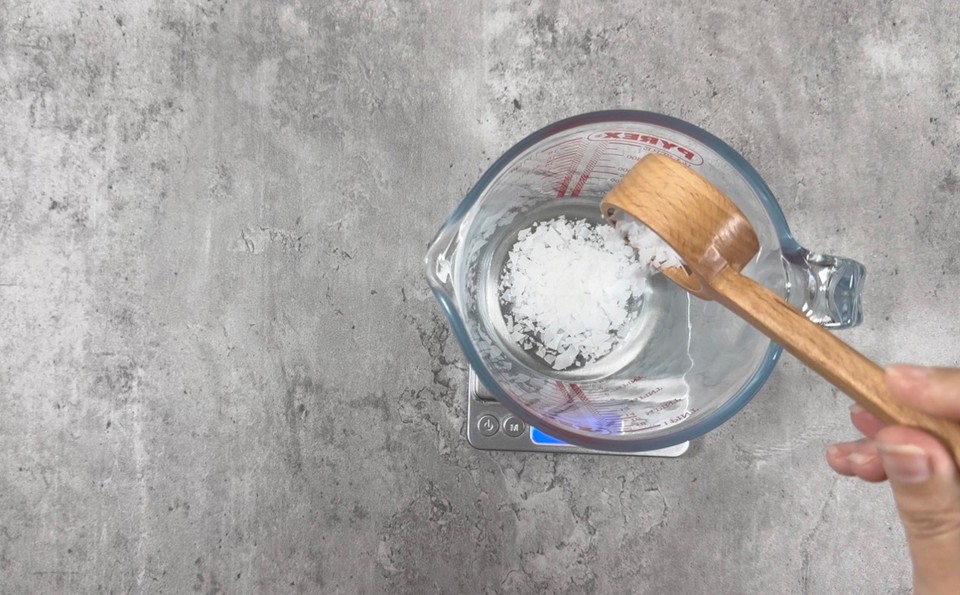

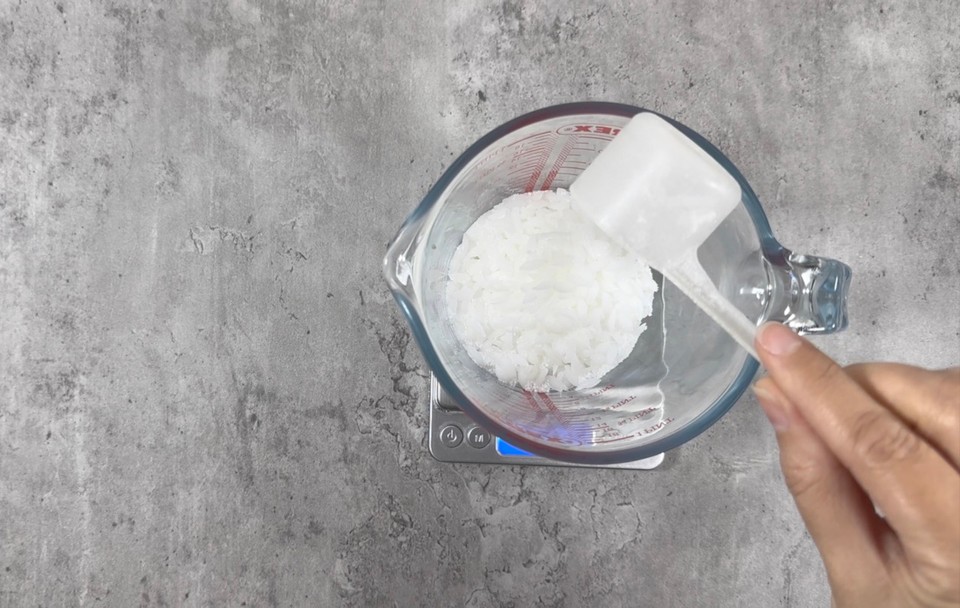
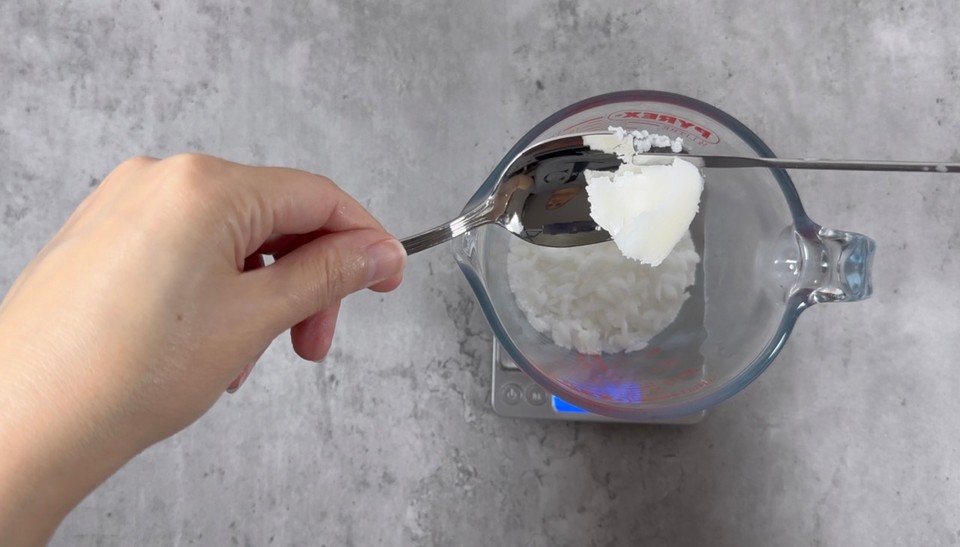
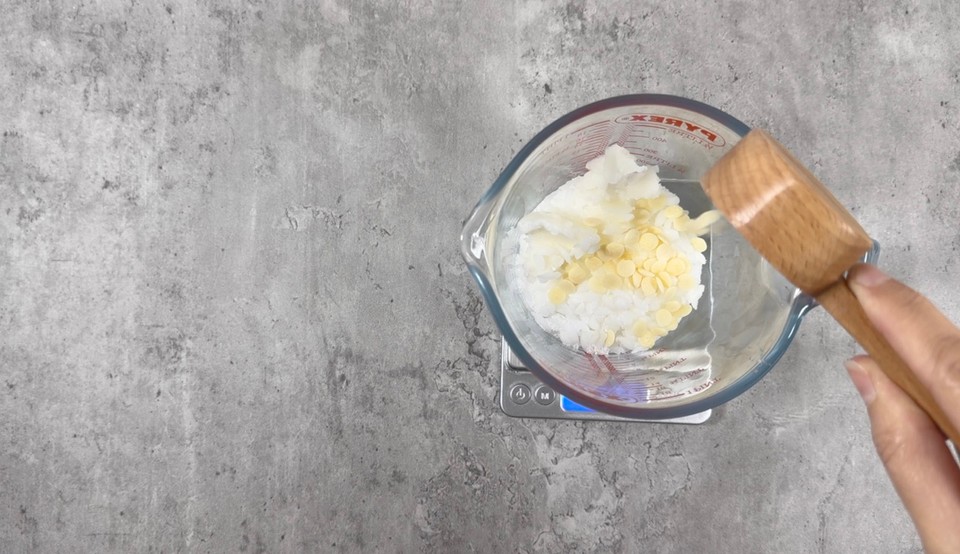
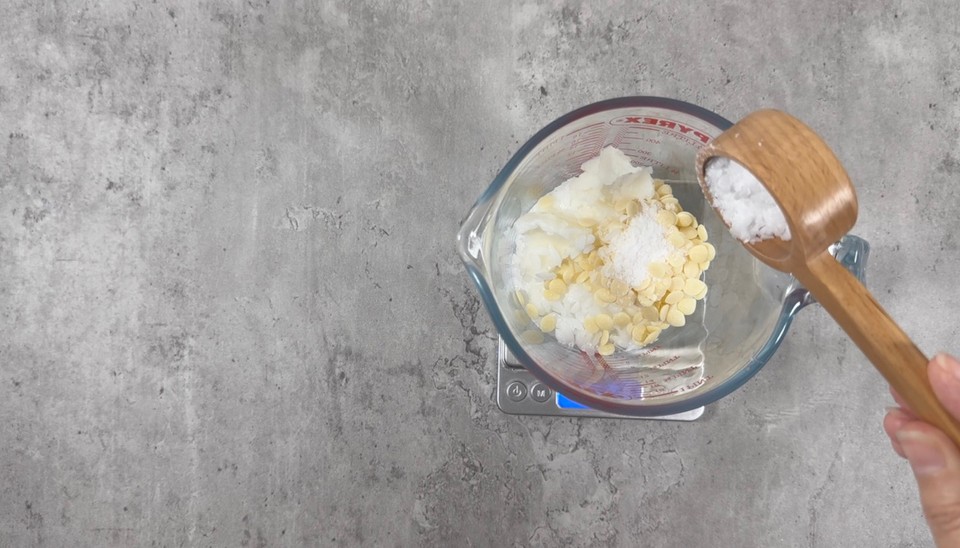
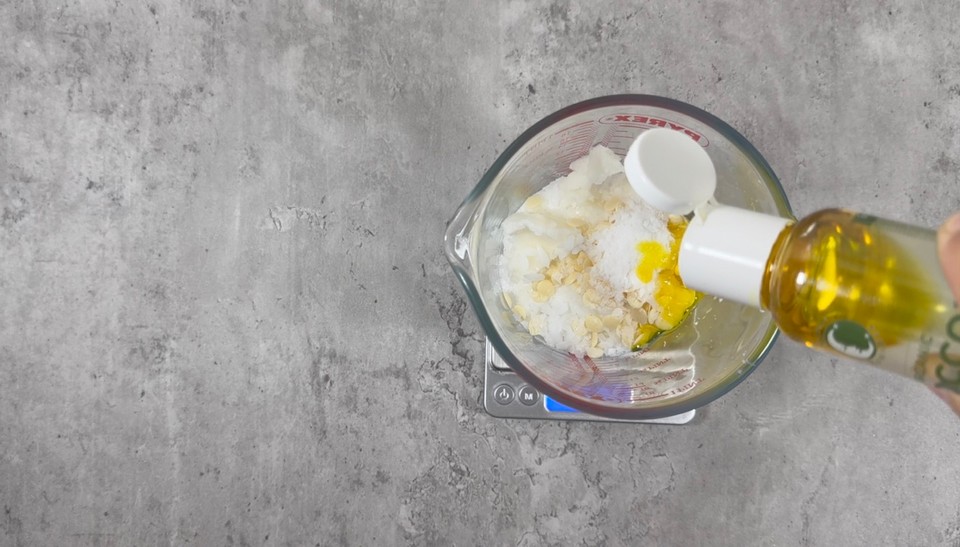

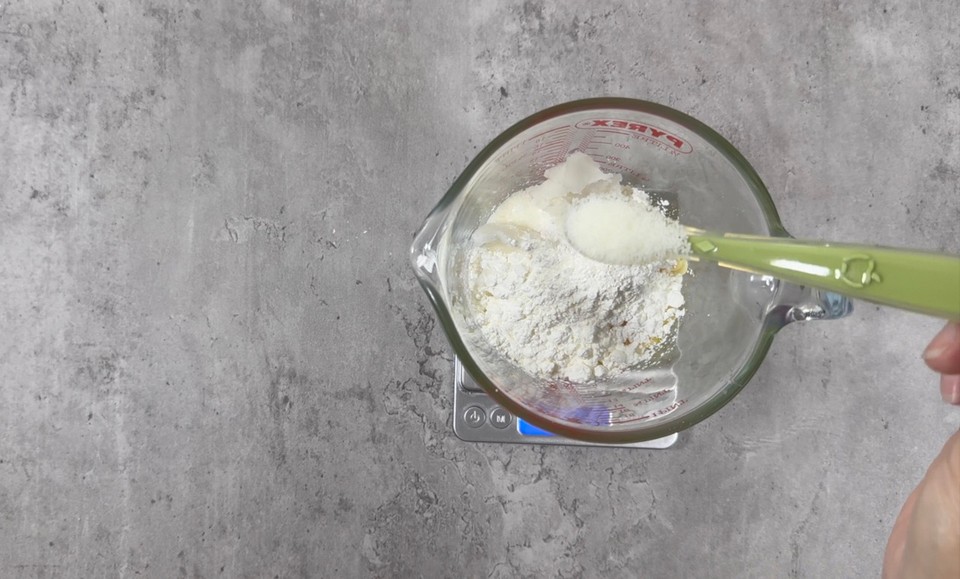
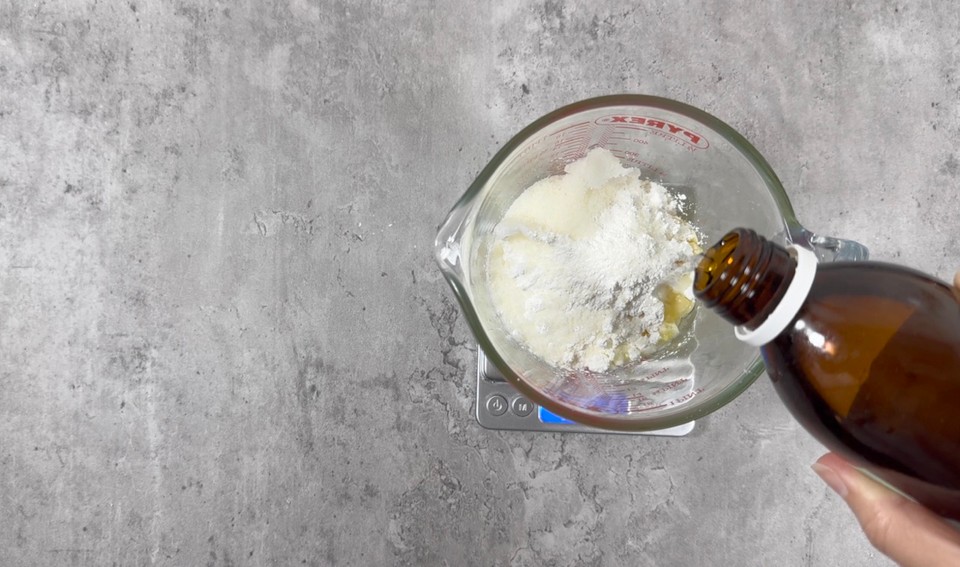

- Place phase A beaker into a double boiler on medium heat to melt.
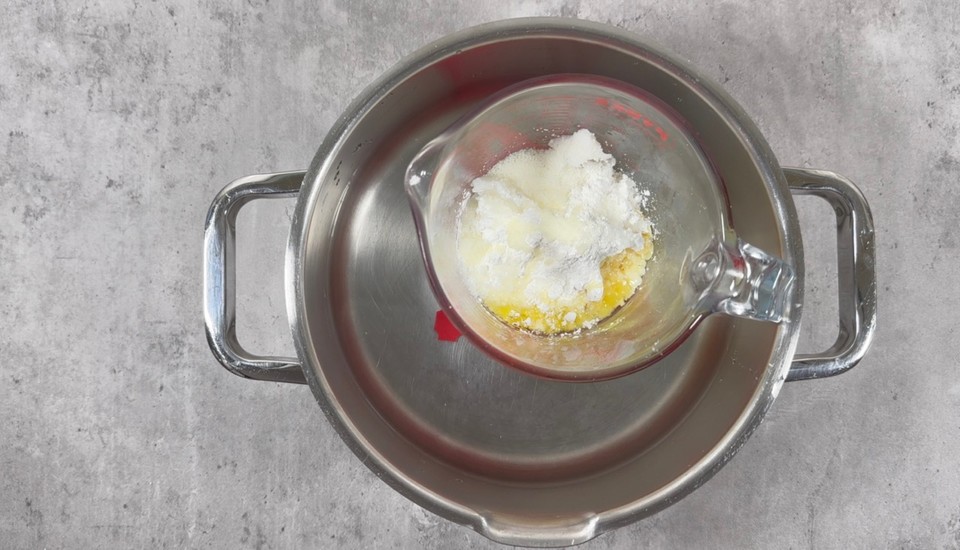
- Prepare phase B in a different container. Mix to combine.
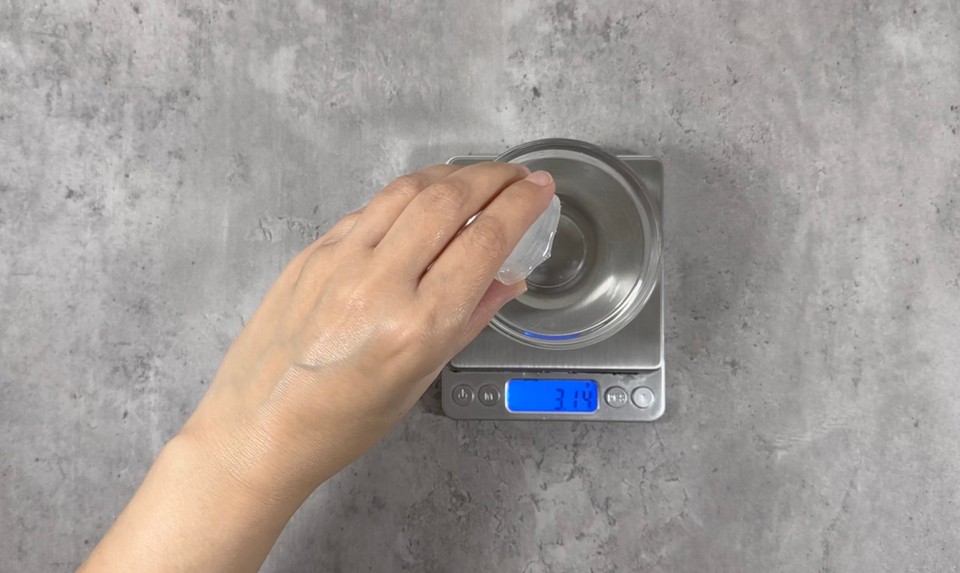
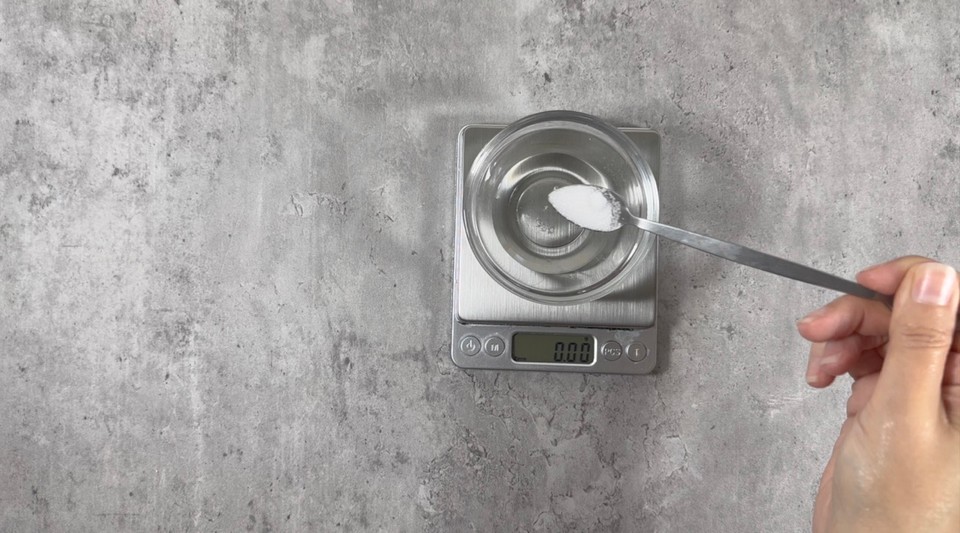
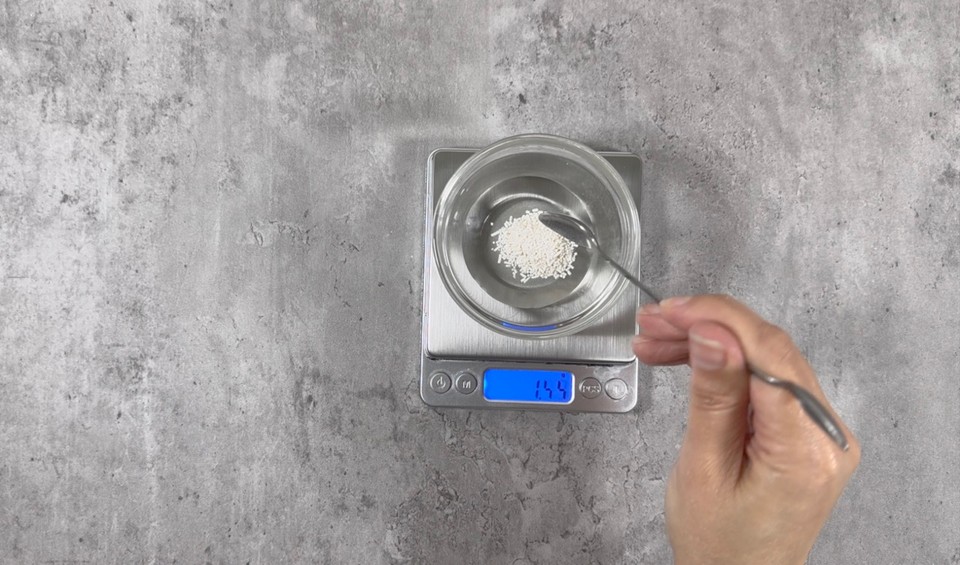
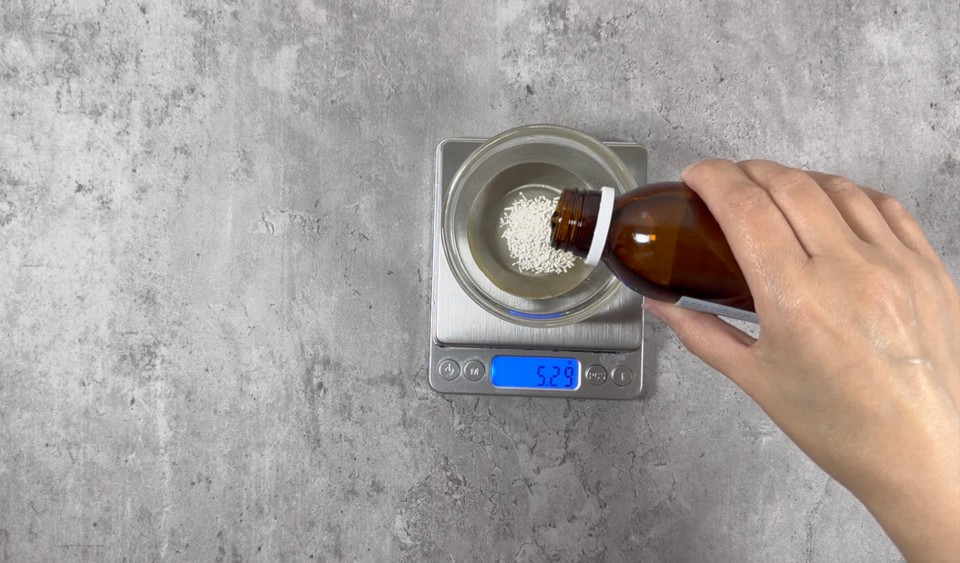
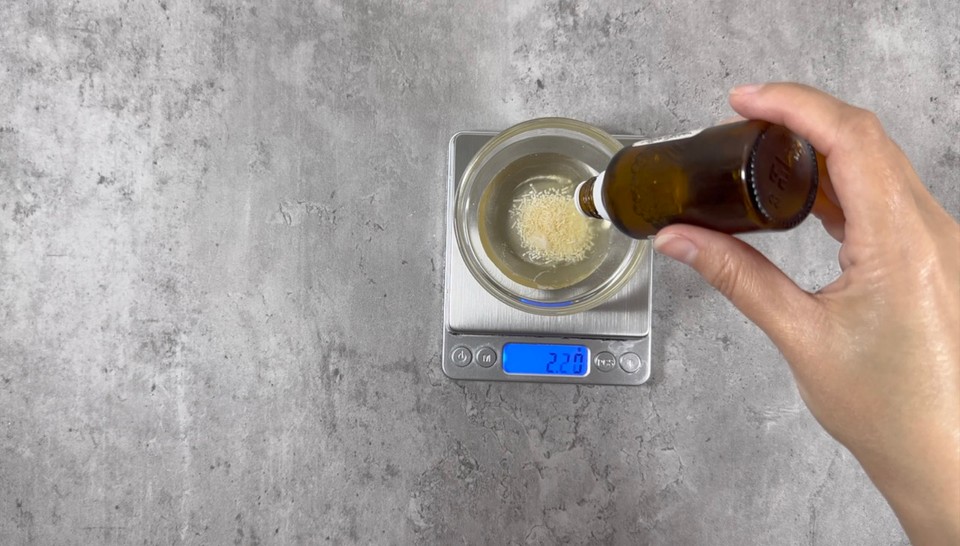
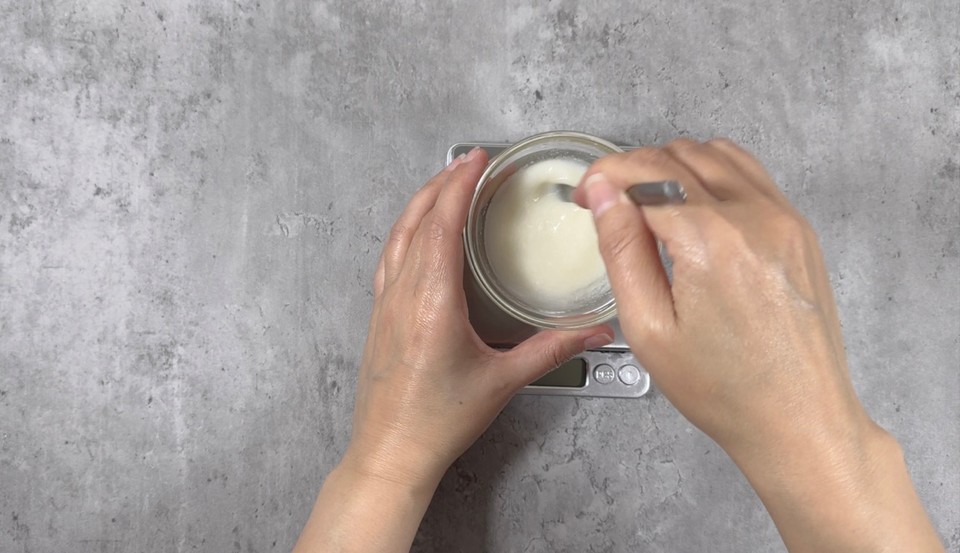
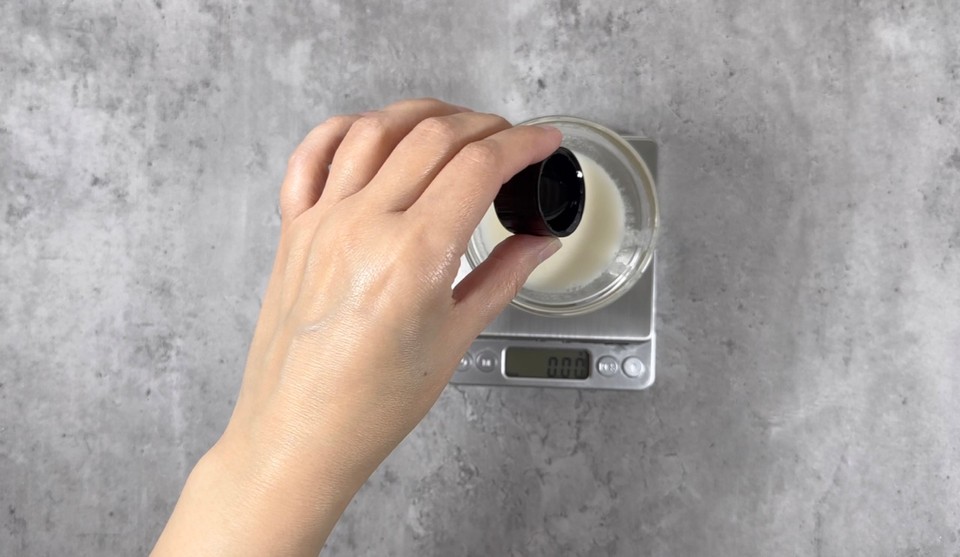
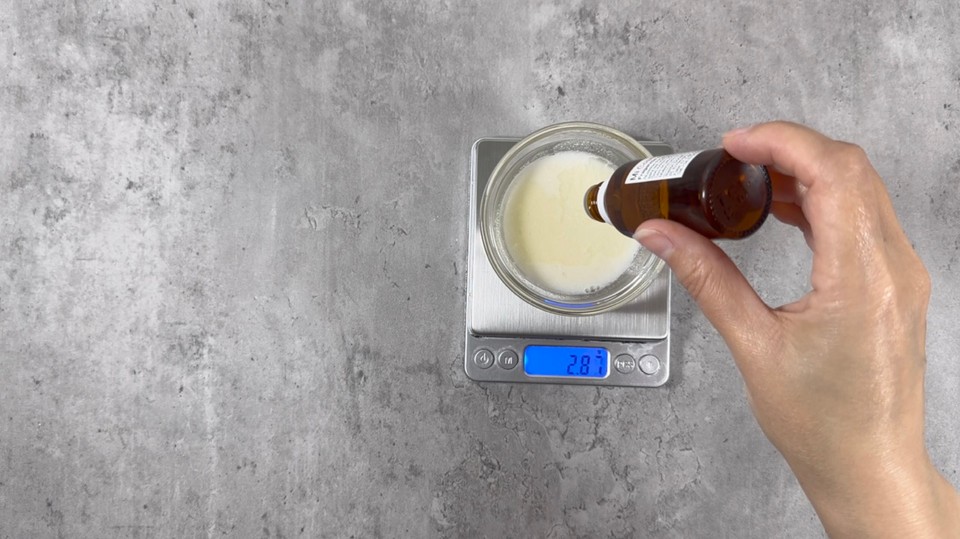
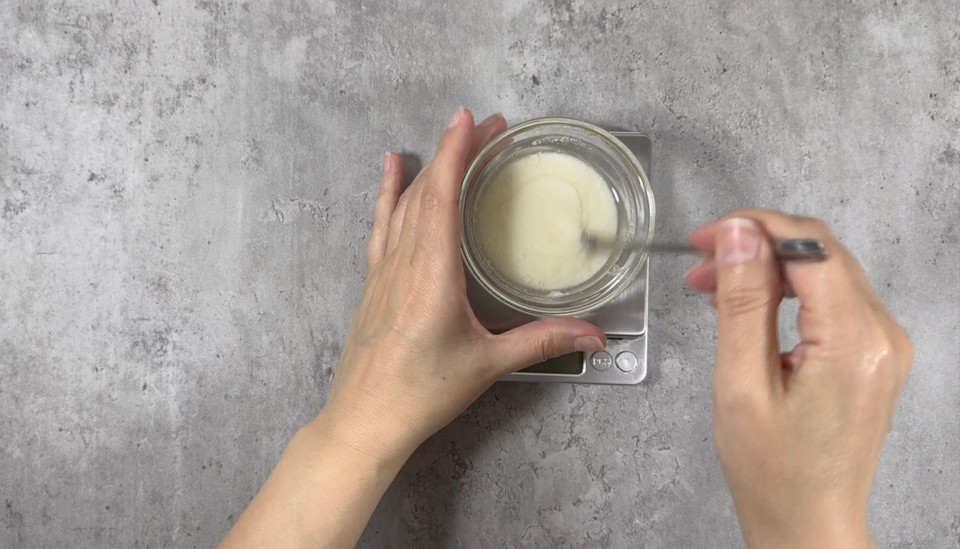
- Remove phase A from the heat and let it cool down for 4-5 minutes. If you want, you can add a pinch of mice for color.
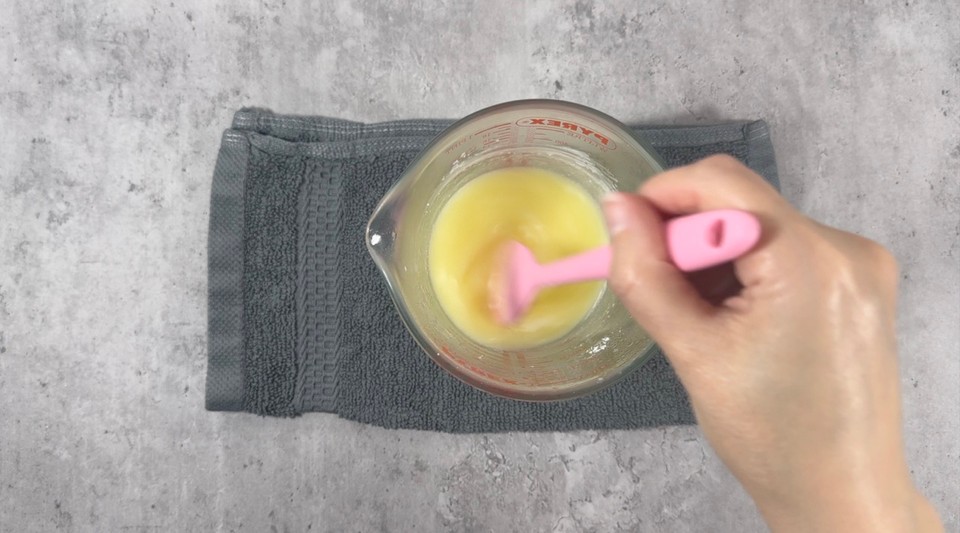
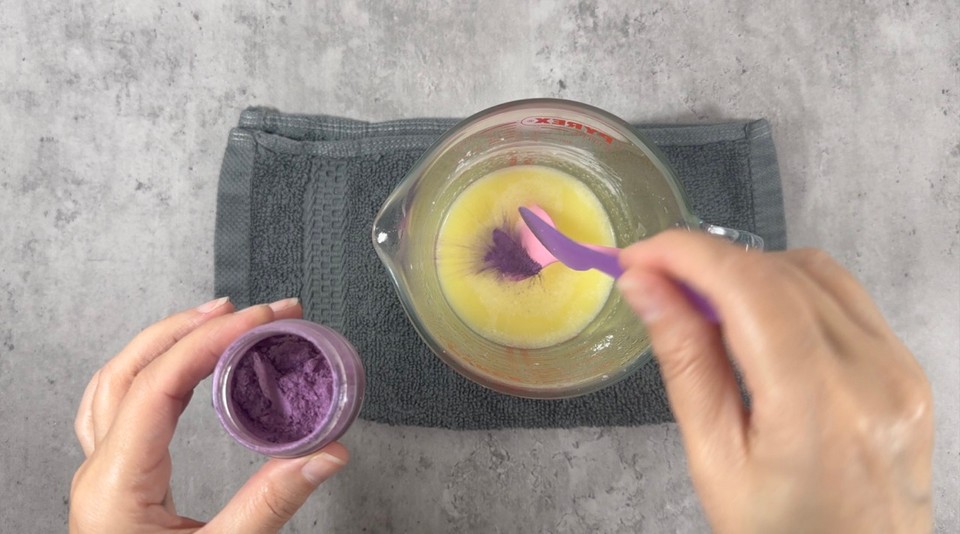
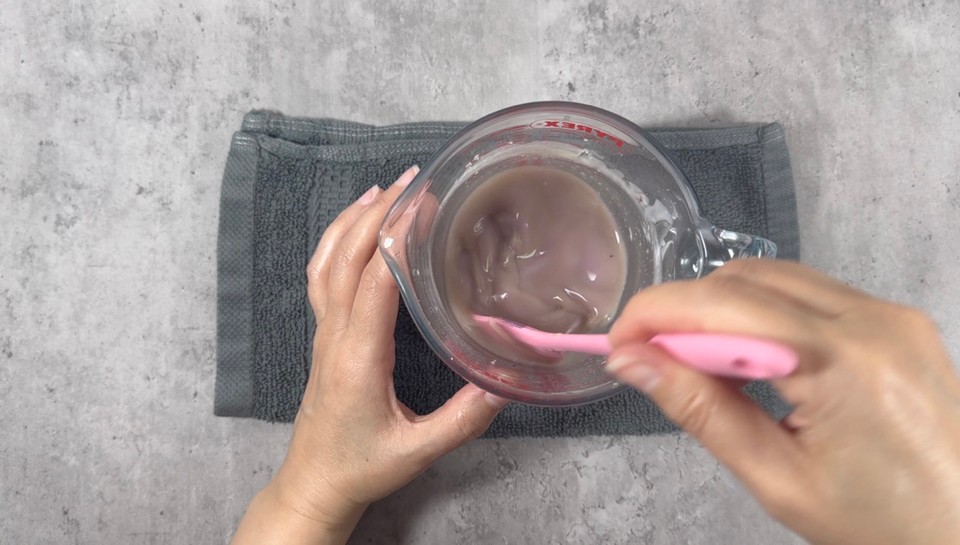
- Add phase B into phase A and mix to combine.
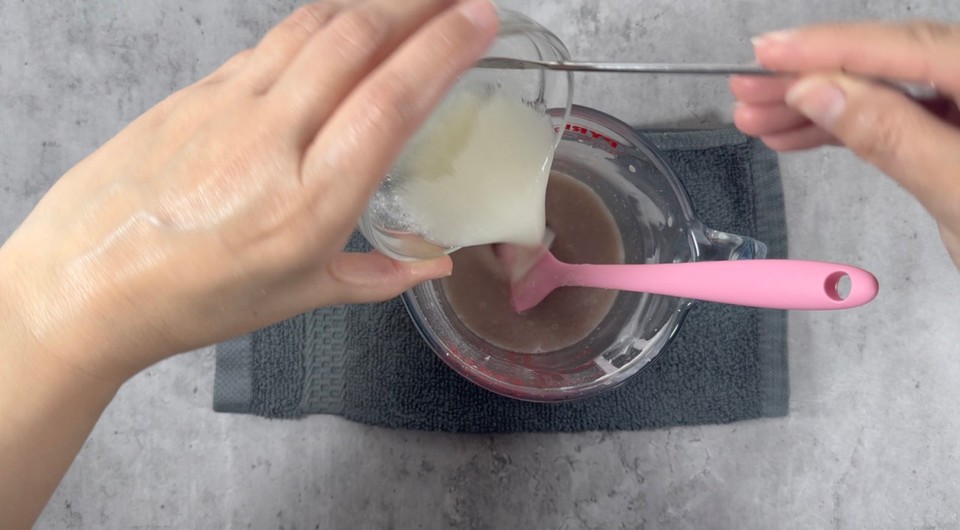
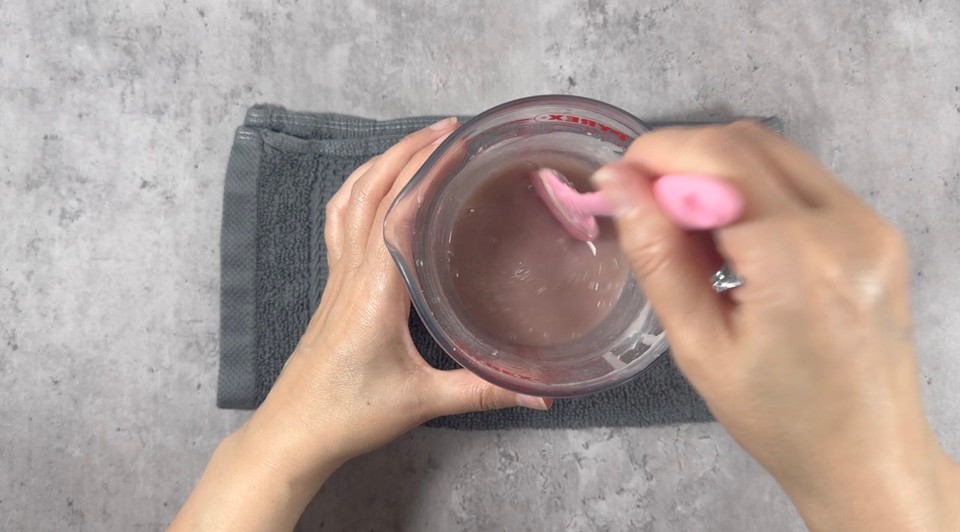
- Pour into molds.

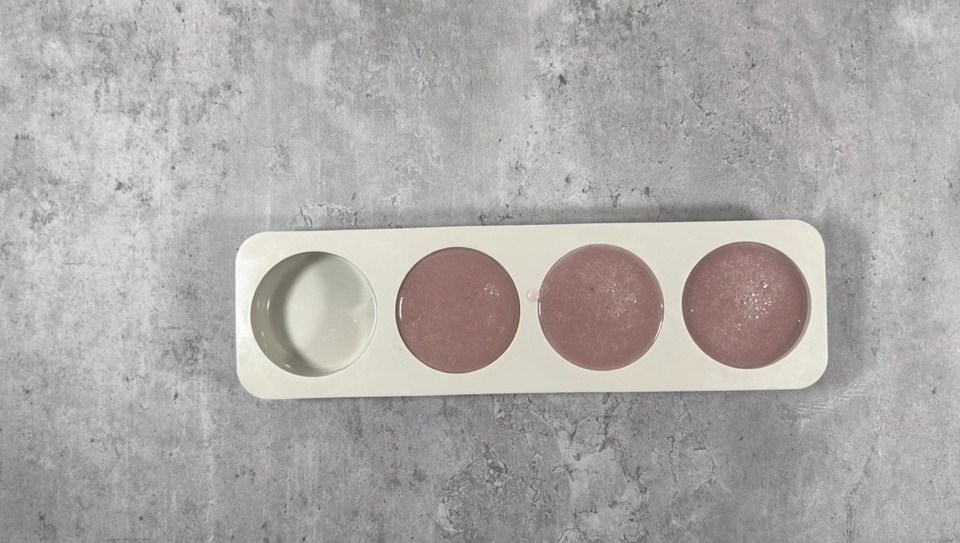
- Let the bars cool down and solidify. You can place them in the fridge to speed up the process.

- once your bars are hard you can use them.

